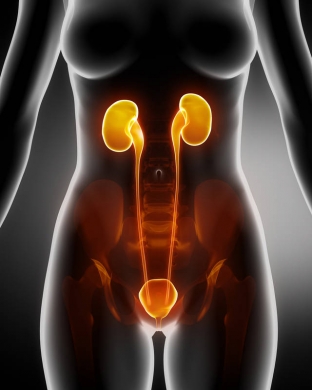Under the influence of negative environmental factors, in the modern world with its crazy rhythm and constant stress, the normal course of pregnancy in a woman is becoming less and less common. Various diseases of the organs of the reproductive system, previously transferred pathologies and bad habits significantly affect the course of pregnancy and childbirth, often causing complications. But practicing obstetricians-gynecologists are most afraid of gestosis, which threaten the development of extremely dangerous complications for the expectant mother and baby. One of these forms of gestosis is nephropathy of pregnant women, read more about it on estet-portal.com.
Danger and clinical manifestations of nephropathy in pregnancy
Gestoses are complications of a physiologically proceeding pregnancy, which arise under the influence of many factors and are characterized by the development of serious violations of the functions of vital organs and systems. Nephropathy of pregnancy is a pathology of the urinary system in which the kidneys are affected, and a characteristic triad of symptoms occurs: edema, hypertension and proteinuria. This condition is very dangerous for a pregnant woman and threatens her with serious consequences, up to the loss of the unborn baby. In order to prevent such a development of events, practitioners must identify pathology in time and provide qualified medical care to patients.
Nephropathy of pregnancy:
- edema is the earliest sign of pregnancy nephropathy;
- why does hypertension occur in nephropathy of pregnancy;
- Proteinuria is a dangerous symptom of nephropathy in pregnancy.
Edema is the earliest sign of pregnancy nephropathy
Edema is one of the earliest manifestations of nephropathy in pregnancy. Edema can be hidden and obvious. In the first case, there are no external signs of fluid accumulation, but there is an uneven weekly increase in the body weight of a pregnant woman by more than 300 g in one week. Obvious edema is divided into 4 degrees according to the degree of distribution:
- 1 degree - edema occurs on the lower extremities;
- 2 degree - edema extends to the lower limbs and abdomen;
- 3 degree - edema is observed on the legs, abdominal wall and face;
- 4 degree - anasarca - swelling of the entire body of a pregnant woman.
Most often, swelling occurs in the ankles, gradually spreading upwards. In the morning, swelling is less noticeable, since during the night, with a horizontal position of the body, the fluid is evenly distributed in the tissues of the pregnant woman's body. It is important to remember that even with pronounced swelling, the patient's condition can remain satisfactory and the woman does not present any complaints, while the course of preeclampsia becomes more and more difficult.
Why does hypertension occur in nephropathy of pregnancy
 The development of hypertension is an important sign of nephropathy in pregnancy, reflecting the degree of vasospasm. The development of hypertension in a pregnant woman is indicated by an increase in systolic blood pressure by more than 30 mm Hg, and diastolic blood pressure by more than 15 mm Hg. It is important to consider what pressure is normal for the patient. In the case of progression of nephropathy, the pressure rises significantly and can reach very high values, posing a serious threat to the life of the pregnant woman and the fetus. It is also important to remember that a significant decrease in blood pressure against the background of pre-existing hypertension is an unfavorable sign, indicating a pronounced spasm of arterioles.
The development of hypertension is an important sign of nephropathy in pregnancy, reflecting the degree of vasospasm. The development of hypertension in a pregnant woman is indicated by an increase in systolic blood pressure by more than 30 mm Hg, and diastolic blood pressure by more than 15 mm Hg. It is important to consider what pressure is normal for the patient. In the case of progression of nephropathy, the pressure rises significantly and can reach very high values, posing a serious threat to the life of the pregnant woman and the fetus. It is also important to remember that a significant decrease in blood pressure against the background of pre-existing hypertension is an unfavorable sign, indicating a pronounced spasm of arterioles.
Proteinuria is a dangerous symptom of pregnancy nephropathy
Proteinuria is the appearance of protein in the urine of a woman, which indicates a severe course of nephropathy in pregnancy and is manifested by the release of several proteins with different molecular weights. With nephropathy of pregnancy, the excretion of protein in the urine often occurs without precipitation in the urine, which distinguishes this pathology from nephritis. The increase in proteinuria indicates a deterioration in the course of the disease and the patient's condition. In pregnant women with nephropathy, there is also a decrease in diuresis, the daily amount of which can be reduced to half a liter or less. Uncorrectable oliguria in such patients may indicate the development of renal failure.






Add a comment